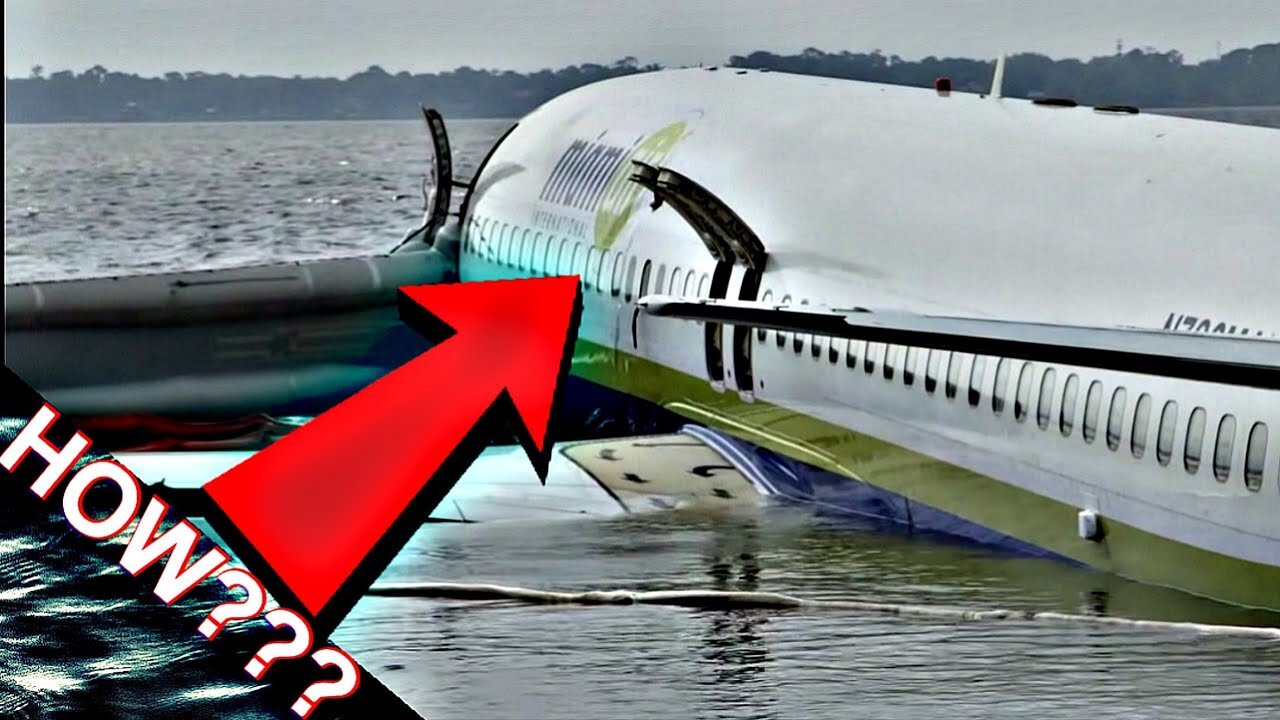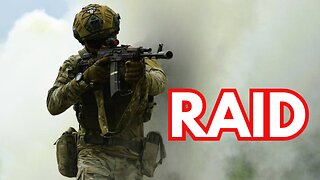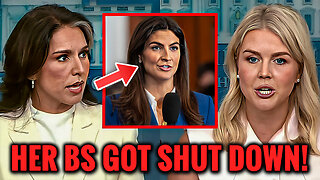Premium Only Content

Air Crash Investigation: Miami Air International 293 | A Boeing 737 crashed in Florida
Air Crash Investigation: Miami Air International 293 | A Boeing 737 crashed in Florida
Miami Air International 293 was operating a military character flight. The aircraft was destined for Naval Air Station Jacksonville, Florida.
19:19
The Boeing 737-800 started its takeoff roll with its left thrust reverser inoperative.
The takeoff, climb, and cruise portions of the flight were uneventful.
The flight crew set up the approach to runway 10 in the flight management system and briefed setting the auto brake at level 2.
21:22
The Boeing 737 was descending through 13,000 feet which the first officer informed the control tower radar approach controller (RP)
The weather was moderate-to-heavy precipitation with the wind from 350º at 4 knots.
21:25:45
The RP controller provided additional weather information to the flight crew. Moderate-to-heavy precipitation was present east and west of the airport. Then he asked the flight crew if they want to stay with the approach for runway 28.
Captain “ah yes sir, what- whichever looks better an ah then when I get closer I check how it is.”
21:30
The precipitation was moving east.
The RP controller advised the flight crew if they want to land on runway 10.
Captain“yeah go ahead let’s do it.”
When the Boeing 737 was 7 miles from the final approach fix, the RP controller cleared the flight for an approach to runway 10 and also confirmed with the RA controller that the flight was set up to land on runway 10.
The captain called for the Landing checklist.
FO “ah…speedbrakes ah armed, landing gear down three green, flaps thirty.”
The Boeing 737 crossed the displaced threshold at an altitude of 140 ft
Miami air 293 touchdown 1,580 ft past the displaced threshold. Maximum reverse thrust was commanded on the No. 2 engine. The speed brake handle was moved aft to 46° after 4 seconds from touchdown but the airplane did not decelerate.
The Boeing 737 crossed the end of the runway and past the displaced threshold. After departing the paved surface, it impacted the seawall and ended up in the shallow water of the St. Johns River. The cabin went dark, and there was no communication from the flight crew.
None of the 143 passengers and crew were seriously hurt, but several pets in the cargo hold died.
Investigation
A Boeing 737 was approaching runway 28. They encountered heavy rain as they began to descent and switched to runway 10 where the weather seemed better. Runway 10 was equipped with wire arresting gear, which essentially shortened the runway's effective length from about 9,000 feet to 7,800 feet. If they had landed on runway 28, they would have a longer runway to stop the aircraft.
The approach was not stabilized. When the Boeing 737 was about 1 nm from the displaced threshold, its roll angle dipped to 12° right, and the airplane deviated to the right. This deviation reached 220 ft right of the runway centerline. This means the wind was strong. At this point, the crew did a mistake by not initiating a go-around. They could come back to land after going around or they could divert to another airport.
Another mistake was, the captain failed to set the auto speed brakes. They even missed it in the landing checklist.
Setting the speed brakes to "auto" would help the spoilers to deploy right after touchdown.
Just before touching down, the speed of the Boeing 737 was 164 knots. Which was 11 knots above the nominal approach speed. Again the crew did the mistake by landing the aircraft above the required speed.
Miami Air International failed to provide its flight crews with adequate guidance for evaluating braking conditions for landing on wet or contaminated runways. Proper estimates about the conditions would have prohibited the pilots from attempting the landing.
The Air Crash Investigation team said that even without those mistakes, the plane would not have been able to stop on the ungrooved runway because of the amount of standing water.
-
 19:55
19:55
The Rad Factory
15 hours ago $1.33 earnedCan I Fix My Fire Damaged F1 Car?
12.8K1 -
 1:26:22
1:26:22
Dialogue works
2 days ago $0.36 earnedScott Ritter: Russia Just DEFIED the U.S.: We'll End the War on OUR Terms!
3.35K8 -
 LIVE
LIVE
BEK TV
23 hours agoTrent Loos in the Morning - 8/01/2025
253 watching -
 13:08
13:08
Dad Saves America
13 hours ago $1.53 earnedTeachers Unions Play Politics While Students Lag Behind - Poisoning of the American Mind: Pt 4
18K11 -
 20:05
20:05
Preston Stewart
13 hours ago $2.27 earnedCrimea Raid to Chasiv Yar Fight
20K9 -
 8:11
8:11
Millionaire Mentor
16 hours agoTulsi Gabbard and Leavitt DOUBLE-TEAM Kaitlan Collins in FIERY Exchange
16.1K6 -
 46:02
46:02
Coin Stories with Natalie Brunell
1 day agoWhat They’re Hiding About the Economy | Natalie Brunell with Danielle DiMartino Booth
49.4K13 -
 12:12
12:12
GritsGG
15 hours ago23 Warzone Wins in a Row! (Cypher AR)
90.1K3 -
 2:12:07
2:12:07
Side Scrollers Podcast
22 hours agoCULTURE SHIFT CAUSES MELTDOWNS + MASSIVE CENSORSHIP EFFORTS RAMP UP | SIDE SCROLLERS LIVE
31K12 -
 11:25
11:25
Nikko Ortiz
1 day agoMost Painful Fails
60.7K31